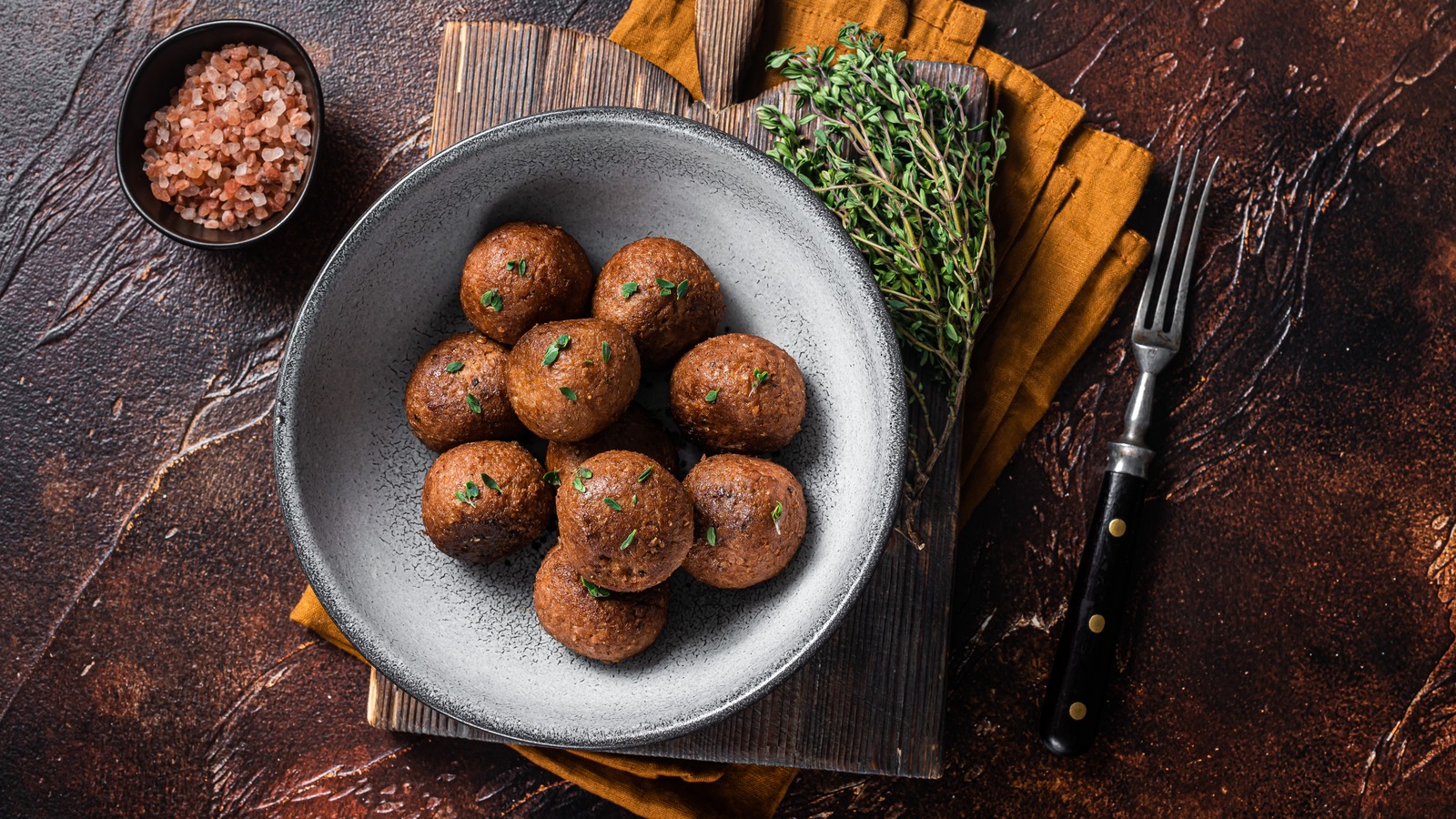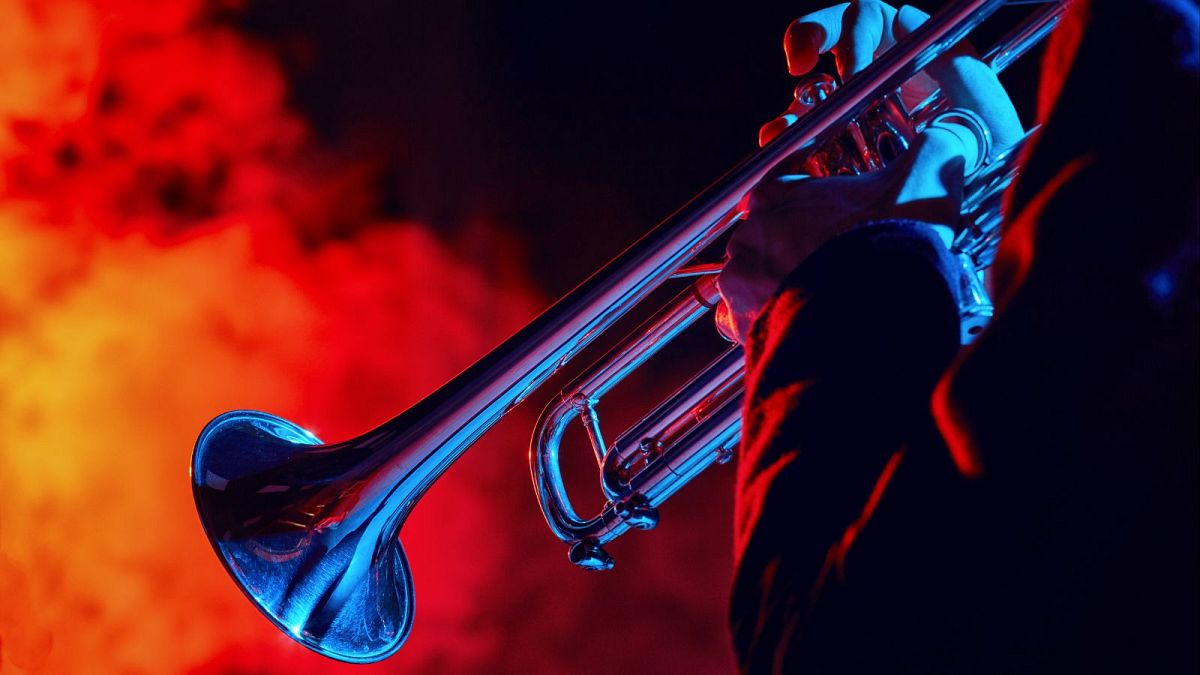We Now Have A Meatball Made Out Of Genuine Mammoth Meat – The Daily Meal

We Now Have A Meatball Made Out Of Genuine Mammoth Meat – The Daily Meal
Unless you’ve been living under a rock for the past several years, you’re probably aware of the recent boom in the artificial meat market. In 2022, plant-based meat substitutes as a whole were worth just under $247 million, and that number is expected to grow exponentially over the current decade.
As this market grows, meat substitutes will begin to play a more prominent role in our leaves. Recently, construction officially began on the world’s largest cultivated meat plant in Wilson, North Carolina. For consumers who are looking for a familiar food to serve as a stepping into the world of artificial meat, Burger King has the plant-based Impossible Whopper. However, while many of these innovative meat substitutes are constructed from plants, and other organic protein sources, food scientists have also discovered a way to use animal cells to synthetically ‘farm’ meat. One Australian company has found a way to make meatballs from extinct wooly mammoths.
Mammoth meatballs are a scientific miracle
 Vow
Vow
Vow, an Australian artificial meat company, has found a way to create what can technically be described as mammoth meatballs. Vow found that it could use myoglobin, the mammalian protein that gives uncooked steak its trademark blood-red hue, as the platform for a clever bit of genetic engineering. A preexisting wooly mammoth genome was completed by borrowing from the sequence of the wooly mammoth’s modern equivalent, the African elephant. This essentially Ice Age gene sequence was then fused with a sheep cell, which would become the 400-gram ball of mammoth meat. However, due to the unknown nature of this ancient protein, the scientists involved in the experiment have stated that it isn’t fit for human consumption.
Unlike dinosaurs, which have been reduced to the bone after millions of years, the wooly mammoth, a species whose existence coincided with that of humankind, can still be found, perfectly preserved, in the Arctic freeze. This is why Vow had a wooly mammoth genome sequence to work with.
There are plenty of reasons why you wouldn’t want to eat ancient meat, not least of which is the fact that actual long-frozen mammoth meat would be an essentially inedible goo. A popular urban legend suggests that the New York City Explorers Club ate a wooly mammoth for dinner in the 1950s, but it was, in fact, a sea turtle that the club tucked into.
Related News & Content
-

Limit taxonomy terms added to a custom post type
Limit taxonomy terms added to a custom post type,I've created a Custom Post Type and a Custom Taxonomy. In WP Admin, how can I limit amount of taxonomy terms that are added to the custom post type? I want to add no more than one tag into the post. Tags: custom post types custom taxonomy limit stackexchange.com WordPress Development Stack Exchange -

Query top level custom post in taxonomy
Query top level custom post in taxonomy,This is my first post, I'm a bit stuck. I have a custom post (dan) and taxonomy (dnas), with hierarchical categories. I want to make a query resulting in posts at toplevel (hoofdcategorie01, Tags: stackexchange.com taxonomy WordPress Development Stack Exchange wp query -

Gutenberg: Restrict Top Level Blocks, But Not Child Blocks
Gutenberg: Restrict Top Level Blocks, But Not Child Blocks,Background I've created a custom top level "page section" block, to work with my existing theme. I've like to restrict top level blocks to ONLY that one block. However, I don't want to di... Tags: block editor stackexchange.com WordPress Development Stack Exchange -

How do I load styles into the block editor admin screen?
How do I load styles into the block editor admin screen?,The core file 'load-styles.php' generates css styles. Some of the styles interfere with the block editor. I would like to pass in my own style rules that override the styles generated by 'load-styl... Tags: block editor stackexchange.com WordPress Development Stack Exchange -

Installing WordPress in a subdirectory
Installing WordPress in a subdirectory,I am trying to install wordpress into a subdirectory of a website. I simply want to build the client's new site in this subdirectory, so a separate and new WP install in this subdirectory, and the... Tags: installation stackexchange.com WordPress Development Stack Exchange -

Custom theme and plugin updating
Custom theme and plugin updating,History: I'm working on a project for a client that involves building 27 unique websites that are built on wordpress. I say unique, because (for reasons that are not worth going into here) they ar... Tags: automatic updates plugin development stackexchange.com theme development WordPress Development Stack Exchange -

Rewrite nested urls for custom post type
Rewrite nested urls for custom post type,I have a problem with nested permalink. I have a structure of urls like that: Catalog -> Category -> Product My urls are: www.domain.com/catalogs (for archive catalog) www.domain.com/catal... Tags: custom post types stackexchange.com url rewriting WordPress Development Stack Exchange -

Ajax not working to insert, query and result data
Ajax not working to insert, query and result data,On my site, through a form I send/register same information in database, do a SELECT/query and return it! Return the last table saved in database, just that user just entered on the form (along wit... Tags: Ajax database functions plugin development stackexchange.com WordPress Development Stack Exchange -

Israel at war, day 204: Hamas airs video of Israeli hostages, one with U.S. citizenship
Israel at war, day 204: Hamas airs video of Israeli hostages, one with U.S. citizenship,Hamas Studying Israel's Response to Position on Cease-fire Talks Gaza Aid Shipments Resume From Cyprus IDF: Two Palestinians Killed After Firing on IDF Outpost in the West Bank Pro-Palestinian Protest Leader Banned From Columbia Campus Here's What You Need to Know 204 Days Into the War Tags: 2023 Israel Gaza War haaretz.com Israel News -

Carol Kirkwood stuns in figure-hugging dress amid BBC Breakfast technical chaos
Carol Kirkwood stuns in figure-hugging dress amid BBC Breakfast technical chaos,CAROL Kirkwood stunned in a figure-hugging dress amid a technical blunder. BBC Breakfast was flung into chaos this morning after a string of sound issues. However Carol, 61, was all smiles as she p… Tags: BBC BBC Breakfast BBC ONE Carol Kirkwood mirror.co.uk The Scottish Sun TV News TV UK daytime TV -

Families ‘to sue prison’ where loud inmates ‘terrorise kids’ with screaming
Families 'to sue prison' where loud inmates 'terrorise kids' with screaming,Residents living next door to a new prison who say their kids have to sleep wearing headphones and some leave during weekends due to the racket are threatening to sue the prison service Tags: mirror.co.uk Neighbours from hell prisons Scottish government The Mirror -

Doctor Strange’s Secret Wars Role May Be More Important Than You Thought – Looper
Doctor Strange's Secret Wars Role May Be More Important Than You Thought - Looper,According to entertainment leaker Alex Perez, Doctor Strange will find himself confronting his inner struggles as he headlines "Avengers: Secret Wars." Tags: Fiction Looper looper.com Marvel Cinematic Universe Science Star Wars The Universal Monsters franchise -

Choctaw artist Jeffrey Gibson confronts history at US pavilion as its first solo Indigenous artist
Choctaw artist Jeffrey Gibson confronts history at US pavilion as its first solo Indigenous artist,Jeffrey Gibson’s takeover of the U.S. pavilion for this year’s Venice Biennale contemporary art show is a celebration of color, pattern and craft Tags: 109377793 abcnews.go.com Article Entertainment General news Indigenous people Keycat Keytags Race and ethnicity U.S. News visual arts World news -

Mexican film wins top prize at Moscow International Film Festival while major studios boycott Russia
Mexican film wins top prize at Moscow International Film Festival while major studios boycott Russia,A Mexican film has won the top prize at the Moscow International Film Festival which took place as major Western studios boycott the Russian market and as Russia’s war in Ukraine grinds into its third year Tags: 109702159 abcnews.go.com Article Entertainment Fairs and festivals General news Keycat Keytags Movies Russia Ukraine war World news -

International Jazz Day: How you can celebrate in Europe
International Jazz Day: How you can celebrate in Europe,What is International Jazz Day, and which modern European jazz artists should be on your radar? Tags: euronews euronews.com jazz Music Unesco -

The best things to do and see (or watch) in Europe this week
The best things to do and see (or watch) in Europe this week,The last Caravaggio, St. Vincent's new album and sexy tennis love triangles in Luca Guadagnino 'Challengers'. Tags: Cinema Culture Digest euronews euronews.com Exhibition Music Netflix TV Series -
Meta stock falls: Why the company's results failed to cheer investors
Meta stock falls: Why the company's results failed to cheer investors,The Facebook parent company, Meta Platforms, reported first-quarter earnings that topped market expectations. However, its shares plunged 15% due to weaker-than-expected second-quarter revenue guidance and an increased spending plan for artificial intelligence. -
Intended highlight of the 2024 Consumer Summit was completely omitted.
Intended highlight of the 2024 Consumer Summit was completely omitted.,A European Commission initiative aimed to let Big Tech companies voluntarily commit to a "cookie pledge", which would allow consumers to make effective choices regarding tracking-based advertising models, has failed to gain traction, a Commission spokesperson told Euronews. Tags: confidentiality of personal data Data Data Protection euronews euronews.com Lobbying firm
Warning: file_get_contents(https://www.scienceradars.com/wp-output-content.php?pg=1&cat=&kw=&lvl=): Failed to open stream: HTTP request failed! HTTP/1.1 526 in /home/wwwroot/xuenou.com/wp-content/themes/chromenews/template-parts/content.php on line 169
Warning: file_get_contents(https://www.bayuexiang.com/wp-output-content.php?pg=1&cat=&kw=&lvl=): Failed to open stream: HTTP request failed! HTTP/1.1 526 in /home/wwwroot/xuenou.com/wp-content/themes/chromenews/template-parts/content.php on line 173
TrendRadars
The Most Interesting Articles, Mysteries and Discoveries

The Comédie-Française puts its costumes on sale

Holiday On Ice celebrates 80 years with France’s avant garde ‘Aurore’

The ideal Easter playlist: The story behind ‘Jesus’ songs

William Shatner Performs "So Fragile, So Blue"





























































